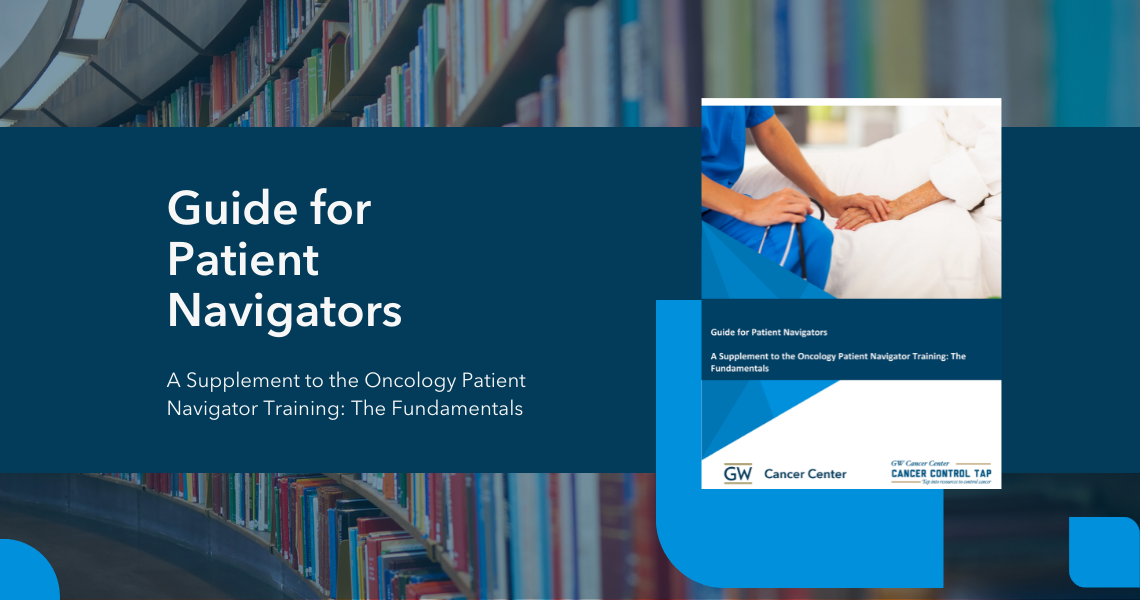In 2015, The GW Cancer Center (formerly the GW Cancer Institute) created the first consensus-based competencies for oncology patient navigators without a clinical license, which was accompanied by the Oncology Patient Navigator Training: The Fundamentals and an accompanying guide in English and Spanish.
View the Visual Executive Summary of the Guide for Patient Navigators *NEW*
View the Guide for Patient Navigators*UPDATED 2022*
View the Spanish Guide for Patient Navigators *UPDATED 2022*
If you need an accommodation to assist in your use of the Guide, please complete the Accessibility Feedback Form.
Oncology Patient Navigator Training: The Fundamentals was reviewed in 2024. The following document provides important updates for patient navigators taking the training after 2020.
View the 2024 Update to the Oncology Patient Navigator Training: The Fundamentals (PDF)
Given the training and guide’s international reach and potential application, we also offer suggestions for where to adapt with regional-specific resources, along with the training slides to tailor to your region and audience.
Please include the following acknowledgment if materials are adapted:
This content was adapted from the GW Cancer Center the Oncology Patient Navigation Training: The Fundamentals (PI: Pratt-Chapman) developed and maintained by CDC cooperative agreements #NU38DP004972, #5NU58DP006461 and #NU58DP007539. The content added, changed, or adapted by our organization do not necessarily represent the views of the GW Cancer Center or the CDC.
View Lesson 1 An Overview of Patient Navigation and Competencies (PPT)
View Lesson 2 Medical Terminology (PPT)
View Lesson 3 Cancer Basics (PPT)
View Lesson 4 Clinical Trials (PPT)
View Lesson 5 Impact of Cancer (PPT)
View Lesson 6 U.S. Health Care System (PPT)
View Lesson 7 Health Care Payment and Financing (PPT)
View Lesson 8 The Role of the Oncology Patient Navigator (PPT)
View Lesson 9 Patient Assessment (PPT)
View Lesson 10 Shared Decision-Making (PPT)
View Lesson 11 Identifying Resources (PPT)
View Lesson 12 Communicating with Patients (PPT)
View Lesson 13 Patient Advocacy (PPT)
View Lesson 14 Culturally Competent Communication (PPT)
View Lesson 15 Scope of Practice (PPT)
View Lesson 16 Ethics and Patients Rights (PPT)
View Lesson 17 Practicing Efficiently and Effectively (PPT)
View Lesson 18 Health Care Team Collaboration (PPT)
View Lesson 19 Program Evaluation and Quality Improvement (PPT)
